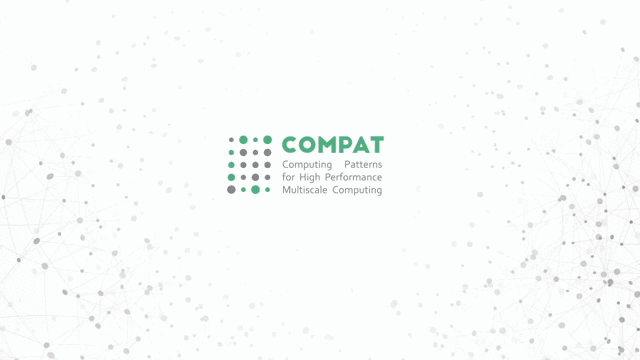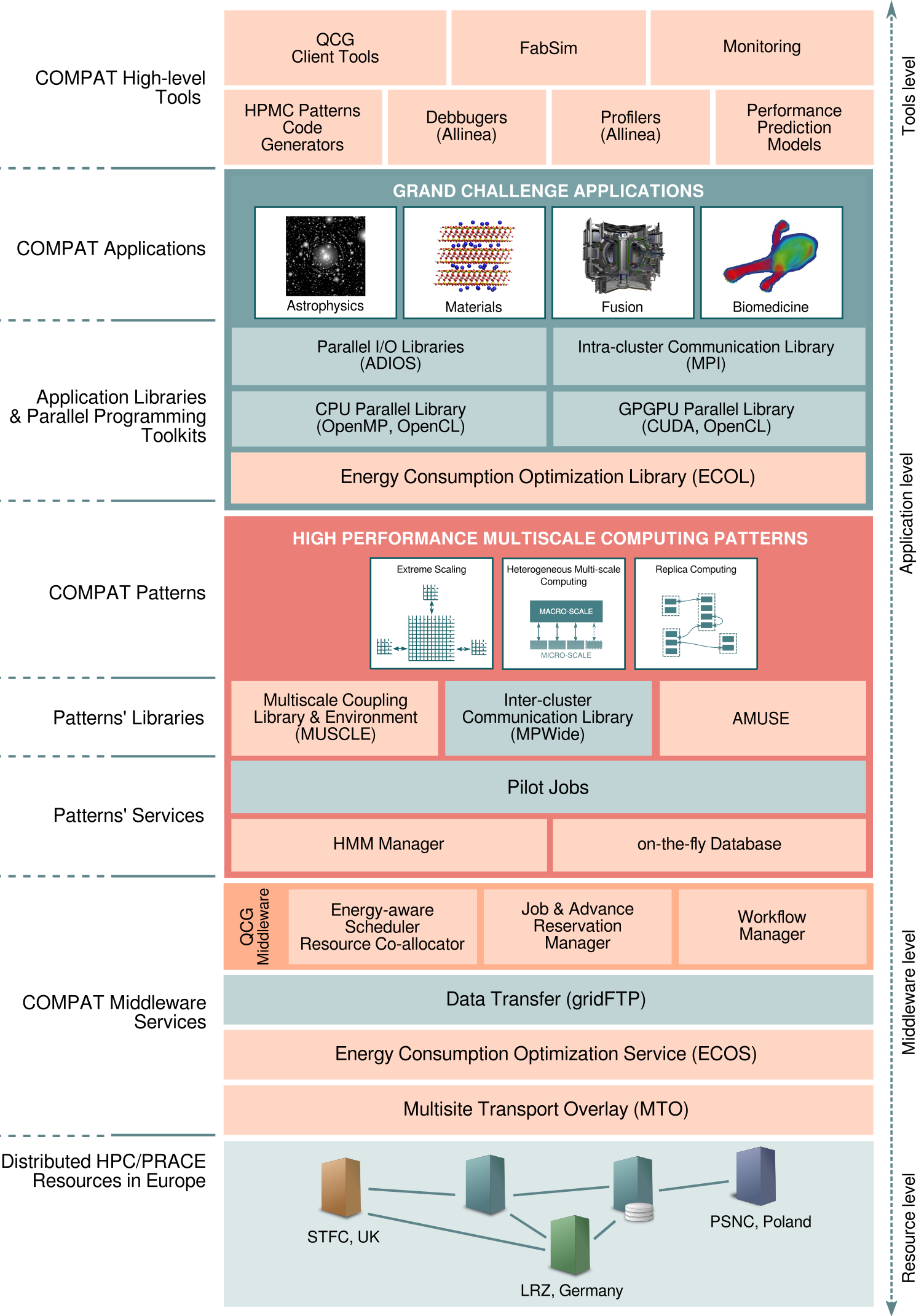About
Multiscale Computing Patterns

The Replica Computing Pattern, see our video below for more information.
ComPat aims to create a general mapping from a multiscale model to a multiscale computing pattern. Reusable software components will be created for each of the three computing patterns. MML specifications of multiscale models will be modified to include these components, and the modified MML will be converted to input for the high-level tools and middleware. The performance of the patterns will be tested and predicted.
Applications
ComPat will instantiate multiscale computing patterns within several selected grand challenge applications. The grand challenge applications demonstrate the viability of our approach, these applications are exascale-ready and pave the road to unprecedented scientific discoveries. Using these grand challenges, ComPat will:
1. Enable application software to interface with high-level tools and middleware services.
2. Instantiate of the multiscale computing patterns within scientific applications and demonstration of their efficacy.
3. Evaluate and profiling of performance, scalability and energy consumption on Tier-0/1 resources.
4. Predict performance, scalability and energy consumption for emerging exascale systems.
The grand challenge applications have been selected from four different science domains:
Nuclear fusion: the interactions between turbulence at very small scales and the large scale plasma behaviour holds the key to control its magnetic confinement in order to produce clean and carbon free energy for the indefinite future.
Astrophysics: the formation processes of stars in their clustered environment, as well as the origin and propagation of structure in the stellar disk of the Milky Way Galaxy.
Materials science: prediction of the materials properties of macroscopic samples of matter based on the specification of the atoms and molecules comprising it.
Biomedicine: pathophysiology of vascular disease, as well as to provide personalised models of the vasculature in near to or real time for the purpose of supporting of clinical decision-making.
Tools, performance predictions
ComPat will developm and optimize tool support for Multiscale Modelling Simulations. We will provide the tools that will enable applications to be analysed as multiscale ensembles – from a performance and energy perspective – and to create models that can be applied to predict the performance and energy of multiscale applications at extreme scale. This is achieved by using existing performance and energy tools, and extending their capability to multiscale.
Exascale middleware services
ComPat will provide middleware services that are capable of efficient execution of multiscale applications, utilizing the concept of HPMC patterns, the Experimental Execution Environment (see below) as well as finally on production environments consisted of single or multiple Tier-0/1 computing resources.
Functional areas include:
1. Logical integration of resources by ensuring interoperability between various resource access services (both on middleware and LRMS levels).
2. Quality of Service by providing means for co-allocation of various types of resources.
3. Workflows management, fault tolerance, load balancing.
4. Fully transparent integration with coupling libraries and tools.
5. Energy consumption optimisation.

Experiment Execution Environment
ComPat will provide an execution environment supporting experiments for energy-aware simulations. The resources allow leading edge profiling of applications, a pivotal step to create performance prediction models of applications based on measurements collected during their execution. To this end, an application must be run on reference hardware to collect performance and energy related parameters, including execution time, useful work, CPU, memory, and network usage, performance counters, and power usage.
Functional areas include:
1. Authentication, authorization, certificate management.
2. Virtual Organization (VO) management.
3. Privacy management.
4. Infrastructure monitoring.
5. Energy consumption monitoring.
6. Installation and configuration.

